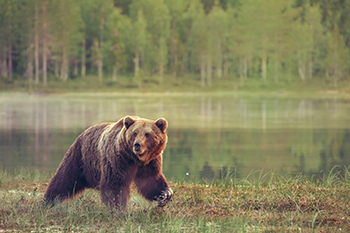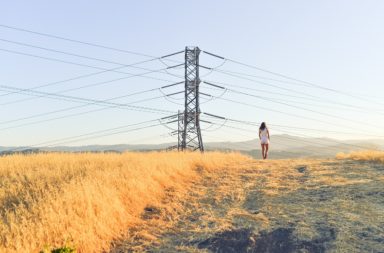5 Simple Ways To Forecast The Weather Using Nature
If you can predict anything about the weather, it’s that it’s unpredictable. Today it may be sunny and 75 and then the next day you may have thunderstorms and temperatures in the 50-degree range. Depending on what part of the country you are located, the temperature variations and weather patterns may vary considerably.
Natural Weather Using Nature as A Guide
Have you ever had a big day planned in the great outdoors, but Mother Nature came in and ruined the entire thing? You can learn to predict the weather by using clues given by nature. Things like atmospheric pressure, dust particles, and wind speed can tell a lot. The old saying “Red sky’s by night, sailors delight. Red skies by morning, sailors take warning,” came from this form of nostalgic weather forecasting.
Back in the olden days, people didn’t have fancy equipment to chart meteorological signs. Instead, they used clues that nature provided to give them predictions. Why do you think so many people are in love with those old-fashioned books that predict the weather based on patterns and previous years? It’s because, in many instances, they are more accurate than the prediction methods of today.
You don’t have to wait on the latest news episode to find out what the condition for tomorrow will be. Here are some easy tips to help you be a wilderness weather predictor.
-
Consider Your Hair
 Have you ever heard someone say that it must be going to rain because their hair is frizzy and unmanageable? There is a great deal of truth to their theory. You can predict rain just by observing hair. Naturally, curly hair tends to get even wavier when there is a buildup of humidity. The relative humidity usually builds when a storm is coming. Hair will be damp and relaxed if the conditions in the atmosphere are dry, but when it’s unmanageable and extra curly, then you can be sure precipitation is on the way.
Have you ever heard someone say that it must be going to rain because their hair is frizzy and unmanageable? There is a great deal of truth to their theory. You can predict rain just by observing hair. Naturally, curly hair tends to get even wavier when there is a buildup of humidity. The relative humidity usually builds when a storm is coming. Hair will be damp and relaxed if the conditions in the atmosphere are dry, but when it’s unmanageable and extra curly, then you can be sure precipitation is on the way.
-
Follow Your Nose

Your senses are not just for eating and such, but you can also smell a change in weather patterns. Many people can smell the rain before it ever hits the ground. It’s caused from the high humidity and low pressure that stir up dust particles. The ground reacts to these atmospheric changes, and it releases an odor that is undeniable. Some say that it smells very similar to a hay field that has just been mowed down. For those that wonder how to read the weather, try using your senses first.
-
Trust Animal Instincts
Nature signs are one of the best indicators of weather. Animals have a sixth sense it seems to be able to predict what’s coming. Take for instance the crickets. The crickets hang out on the ground, and its many degrees cooler than around your head. To get an accurate prediction of the temperature, use 14-second intervals, and count how many chirps you hear.

Once you get your number, add 40 to it, and this will give you a close estimate to the outdoor temperature. It sounds crazy, but it works. Let’s say the cricket lets off 15 chirps in that time frame. If you add 40 to that number, then you will have a temperature of around 55 degrees F. Check it with a thermometer to see how accurate you are.
On the most used old fashion signs has to do with cattle. When they sense the weather is going to change for the worse, they will get away from any exposed hills and gather in the lower elevations for protection. Elk and deer hang out in the mountainsides. They will use valleys as a storm is approaching. When the stormy weather is over, they will return to their mountains to graze. If you’re new to weather predicting and want a sure-fire way to get started, then monitor the animals for nature signs.
Frogs are another animal that is in tune with the weather. They may be better than a hiking barometer at predicting rain. The humidity that comes from the pre-storm hours makes the skin of the frog moist. Because of these changes, they can stay out of the water for longer periods. Those who live in the wilderness areas will notice a great deal of calling when precipitation is imminent. These changes usually take place a few hours before the storm rolls in. It seems animals can give better weather updates than most news channels.
-
Keep Your Eyes on The Skies
What is it about those red skies that seem so mesmerizing? Is it a beautiful color display, or is it the fact that the sky tells many tales about the upcoming weather? When a red sky appears at sunset, the weather for the following day should be great. However, if the sky is red in the morning, then it’s a sign that rain and rough weather is expected. You don’t have to be a sailor to use the skies to predict the weather.

As the seasons begin to change, you will see more fog from low lying clouds. If it’s gray in the morning and there is fog in the valleys, then it isn’t as bad as it seems. You may be surprised to learn that it’s symbolic of a clear day ahead.
The next time you are looking at the moon, see if there is a halo around it. During the summer months, the atmospheric pressure builds and causes a halo to form around the sun. When you see this imminent glow, then you can be sure that the weather is about to change. In most instances, it means there is rain heading your way. Natural weather is the best indicator of what’s coming your way.
Finally, the clouds can tell you a multitude. Specifically, keep your eyes on those stratus clouds. These clouds are like a vast gray blanket that is hanging from the sky. If they appear on a warm day, then you can expect some rain. However, if they appear during the colder winter months, then you can expect snow is coming. The stratus clouds are almost always there when warm and cold air collide.
-
Winds of Change

Do you want to learn how to predict rain? The wind speed can tell you a lot about the current conditions. If a storm is coming, the wind will tell the tale. Remember, when the wind is blowing in from the southern side, then it almost always brings rain with it. A northern wind is bringing in clear weather. Watch out if the wind has been blowing all day and then suddenly stops to an eerie calm. It means that you are in for a massive storm.
How to Read the Weather in All Seasons?
If you are looking for weather updates from the latest news, you may miss the mark. While all this machinery tries to predict to the best of its ability, it misses what the old fashion signs doesn’t. Weather forecasting is not rocket science if you learn all about relative humidity, and how to watch the skies. All you need is a good hiking barometer and to be able to follow the meteorological signs. Even in rural areas, you can predict wilderness weather, and plan your days based on a tried and true method.


